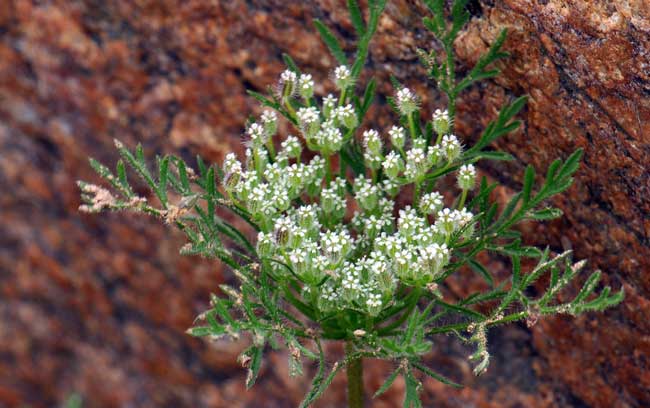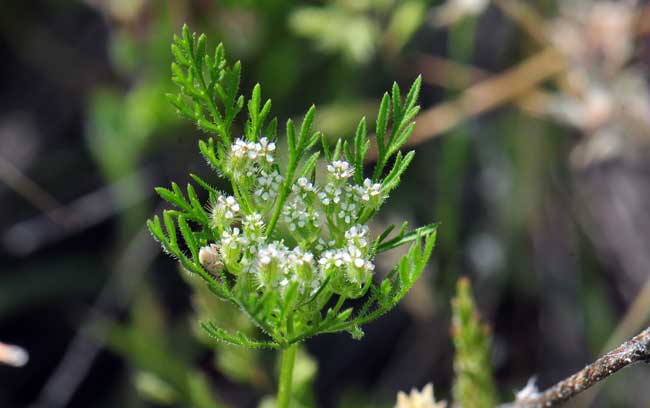Daucus pusillus, American Wild Carrot


Scientific Name: Daucus pusillus
Common Name: American Wild Carrot
Also Called: Rattlesnake Carrot, Rattlesnake Weed, Seedticks, Southwest Wild Carrot, Wild Carrot; (Spanish: Zanahoria Silvestre, Zanahoria Cimarrona)
Family: Apiaceae [Umbelliferae] Parsley or Carrot Family
Synonyms: ()
Status: Native
Duration: Annual
Size: Up to 2.5 feet or more.
Growth Form: Forb/herb; erect, slender stem, usually single stem, short stiff hairs, bristly.
Leaves: Green; petiole long up to 6 inches, margins pinnatisect, 3 or 4 times.
Flower Color: White; flowers on tip of slender stem surrounded by supporting structure of bracts, an involucre, fruit is oblong.
Flowering Season: March to May, blooms later in California; April to June.
Elevation: Up to 4,000 feet.
Habitat Preferences: Rocky or sandy places.
Recorded Range: American Wild Carrot is found in southern and western North America; AL, AR, AZ, CA, FL, GA, HI, ID, IL, KS, LA, MO, MS, NC, NM, OK, OR, SC, TN, TX, VA, WA, British Columbia, Canada and South America. In Arizona, it is found in central, west central and southern parts of the state with few records in the northwest and northeast parts of the state.
North America & US County Distribution Map for Daucus pusillus.
U.S. Weed Information:
No data available.
Invasive/Noxious Weed Information:
No data available.
Wetland Indicator:
No data available.
Threatened/Endangered Information: No data available.
Comments: Daucus pusillus is closely related to our cultivated varieties and the taproot, although small, are edible carrots. This species superficially looks similar to the cultivated Queen Anne’s Lace, Daucus carota.
The roots of American Wild Carrot were dried and cooked with wild celery by the Navajo’s who used the plants for snake bites. See other ethno-botanical uses at Native American Ethnobotany, University of Michigan, Dearborn.

